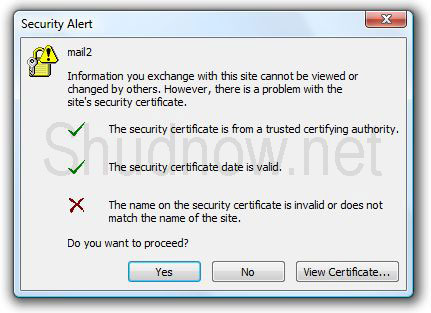
MAILSPRING WINDOWS CERTIFICATE ERROR KEYGEN

You can create it through IIS, but in my case I used makecert to generate it. There are also different ways to do that. In my case, I did a self signed certificate. Or your organization may have their own Certification Authority. You can get a certificate from a known CA such as VeriSign. You can generate a self signed certificate. There are different ways to create a certificate. What is missing here is the item that will cause us to trust the certificate that is being presented by SQL Server. So, any certificate that comes from VeriSign, we will trust because it is a known organization. VeriSign is an example of one that is in this folder. So, if any certificate originates from any of these, they will be trusted by the system. When we select the Certificates folder under the Trusted Root, these are all of the Certification Authorities (CA) that we trust. The Trusted Root store are the items that we trust that could be part of the certificate chain.įor our purposes, and to correct the issue, we are interested in the Trust Root store.


The Personal store is where the certificates reside that you can actually use. Personal and Trusted Root Certification Authorities. For the purposes of this walk through, I’m going with Computer account.Īfter we add the Snap In within MMC, we will see several folders. There are reasons why you would want to do either a service account or your user, but you need to know what you are doing and what your scenario is to understand how things will be affected. So, Management Studio would start working, but the Data Management Gateway would still fail as that doesn’t run under your user account. If you use My user account, it will be for your specific user. This will cover everything on the machine. I always use the Computer account context. In what context? You have three options: My user account, Service account and Computer account. When you add that, you’ll presented with a dialog about how you want to manage certificates. Open MMC and add the Certificates Snap In. To review the Trusted Root store, we can use MMC to do this. In our case, the certificate used by the SQL Server is not within the Trusted Root Certification Authorities store of the machine running the Data Management Gateway. To correct this, we have to deal with certificates. In this case the error indicates that it was because we don’t trust the certificate, which is a fairly specific error versus the generic error from the OLE DB Provider. Based on the information in the certificate, and the certificate is invalid. This is due to the certificate that SQL Server is presenting. SSL Provider: The certificate chain was issued by an authority that is not trusted. Here is what the error is from the SQL Server Native Client. NET Provider and SQL Server Native Client, the messaging has been updated and can give you more details. The OLE DB Provider error is fairly generic and not overly helpful. One of the reasons I recommend moving off of it is due to the error message itself. Although depending on how you pulled information into Excel, that may be the provider listed and we need to match that as I’ve described in other blogs. NET Provider or SQL Server Native Client if possible. This is a really old provide and we should move to the. They were using the Microsoft OLE DB Provider for SQL Server as the provider. We would get a failure in a different application as well, such as Management Studio.

While we are using Power BI, this is a great example of just a regular connectivity issue. The client in this case will be the Data Management Gateway. When we get an SSL error, we are talking about Certificates and trying to encrypt traffic between the client and the Data Source. I was approached with a case where the customer was trying to create a Data Source within the Power BI Admin Center and received the following error when trying to test the connection and having Encrypt Connection selected.įailed to test connection.


 0 kommentar(er)
0 kommentar(er)
